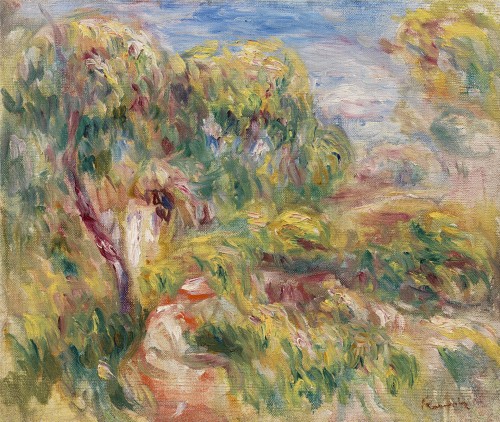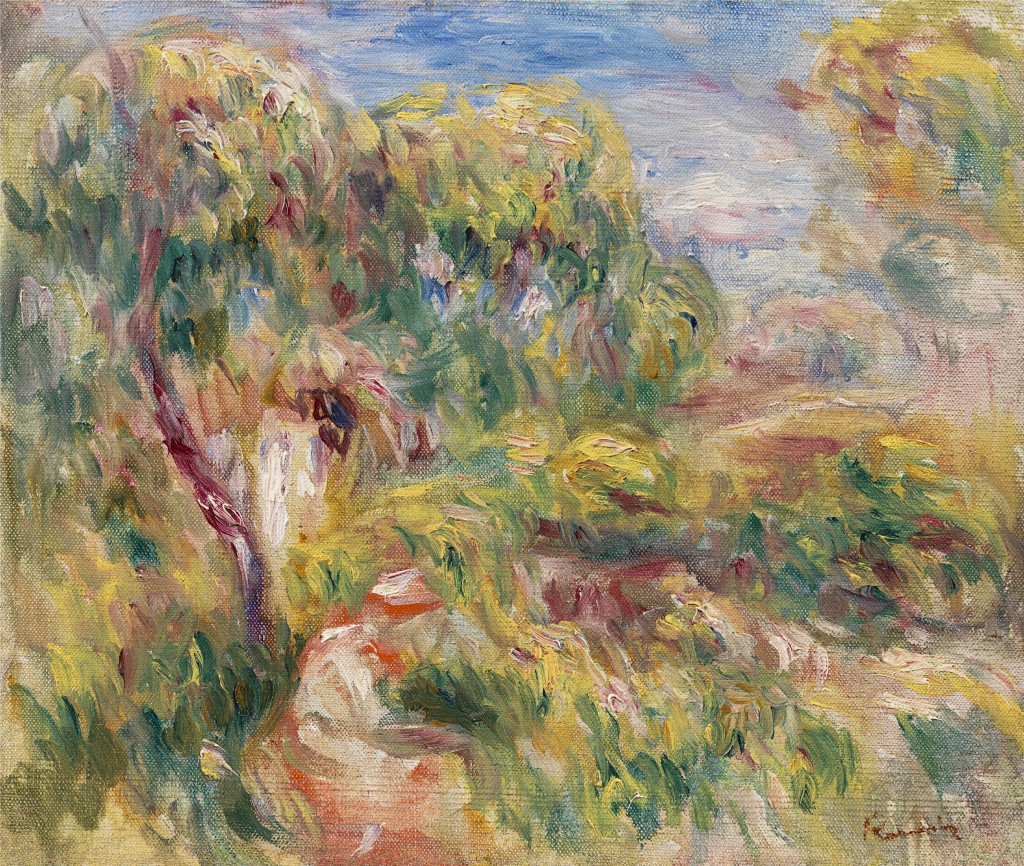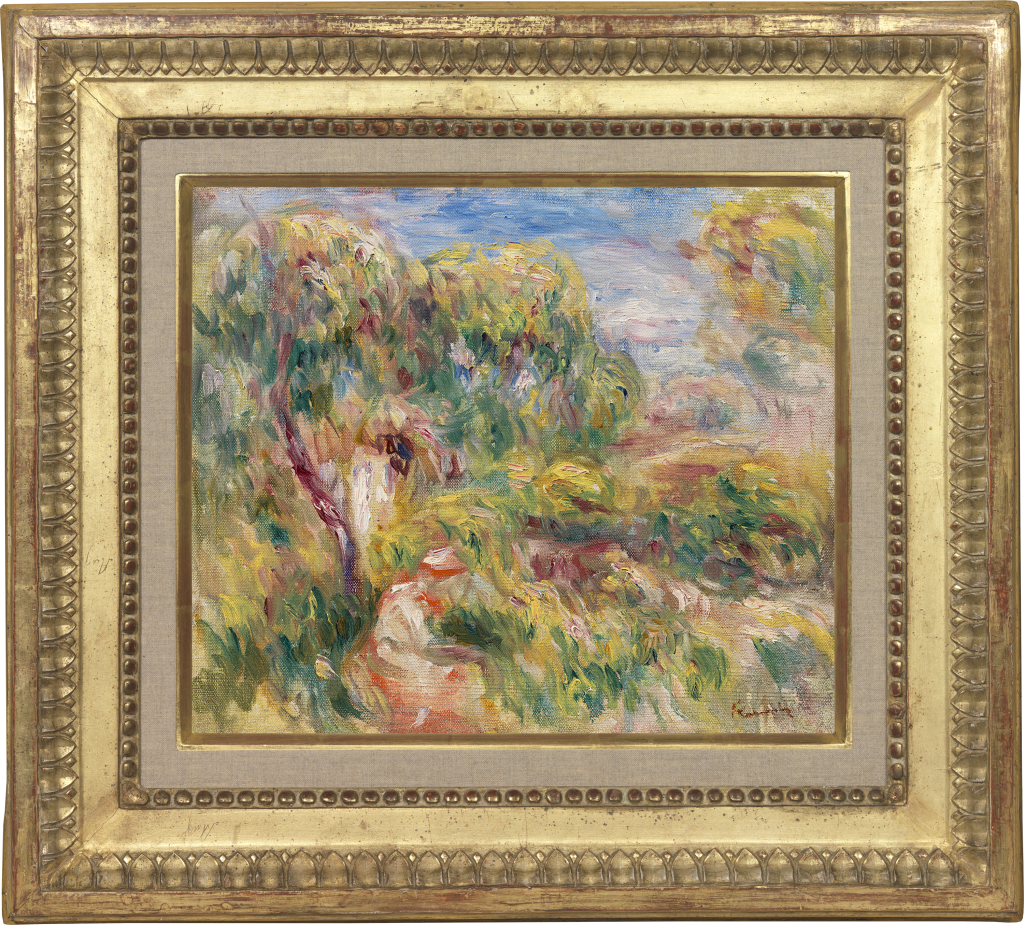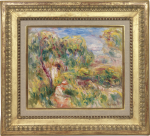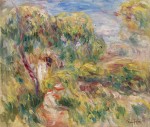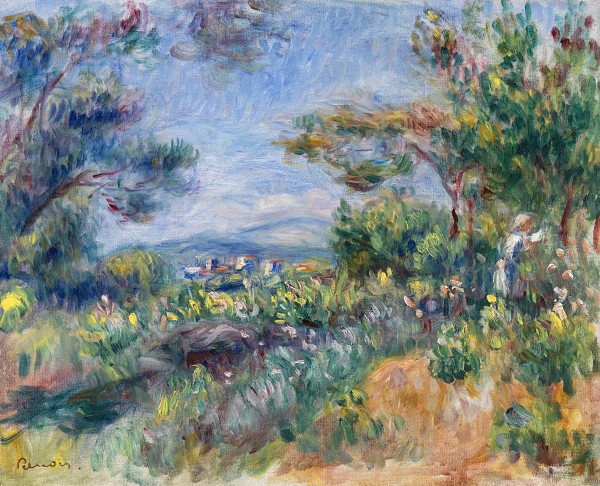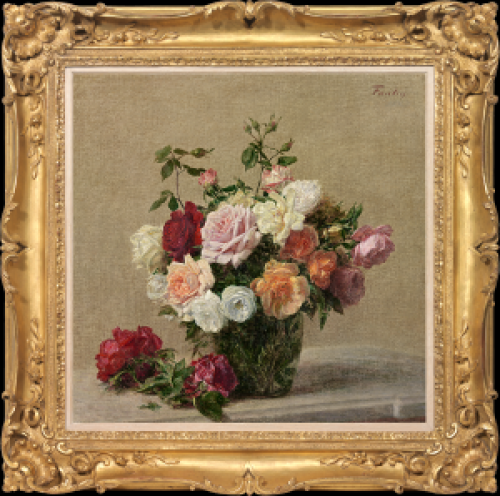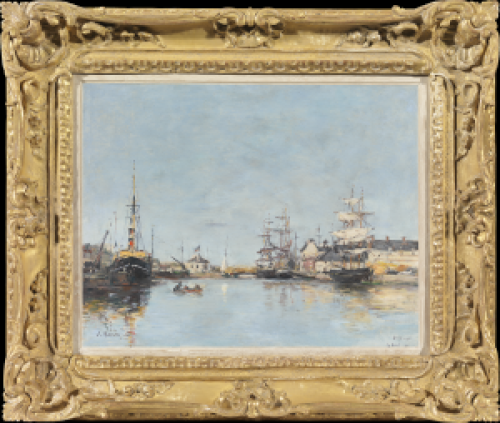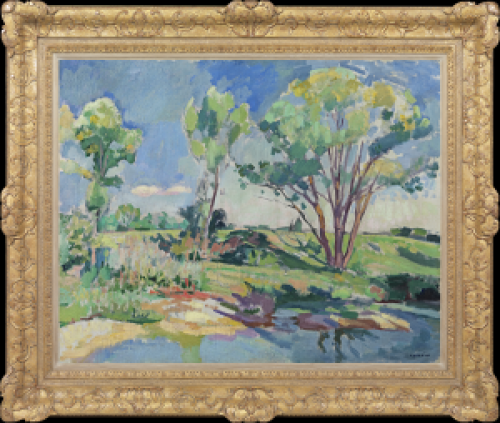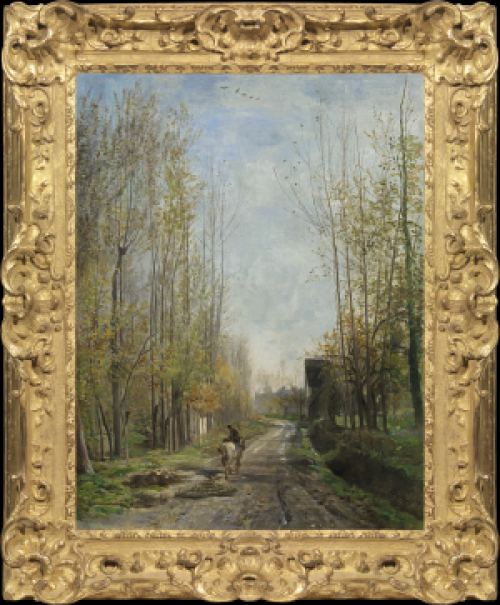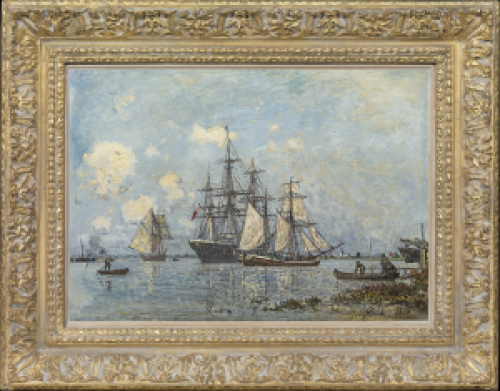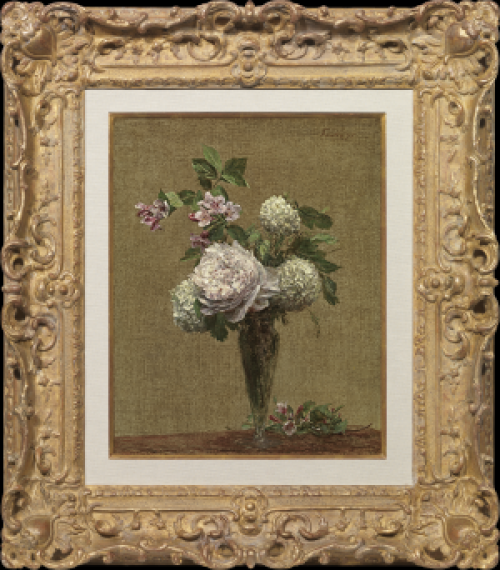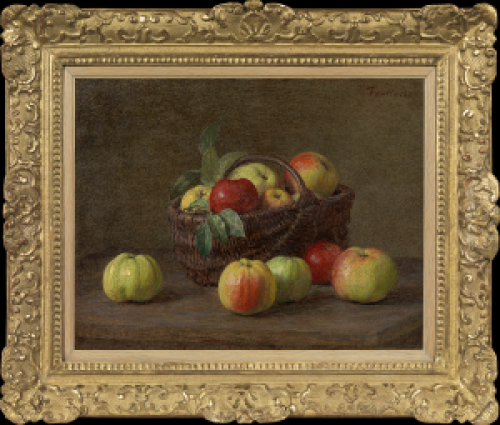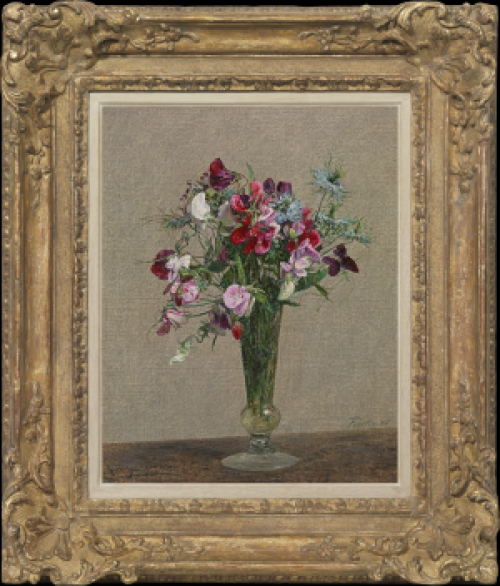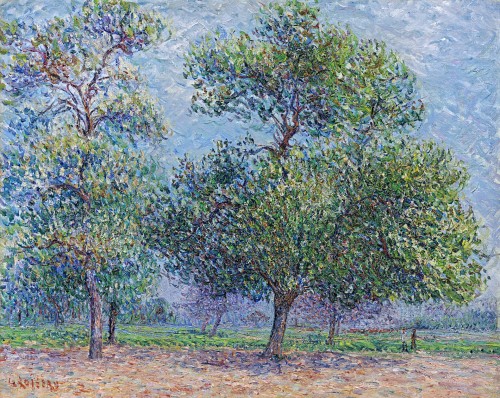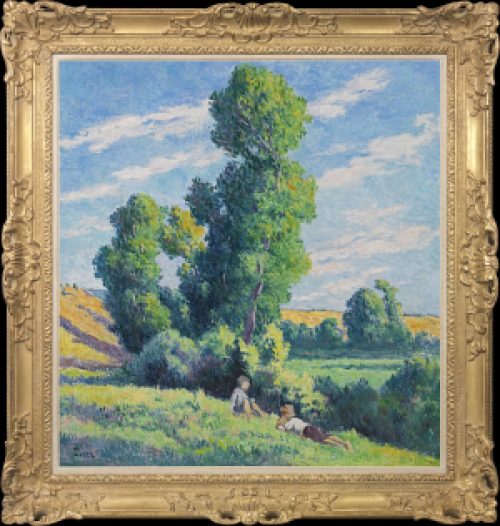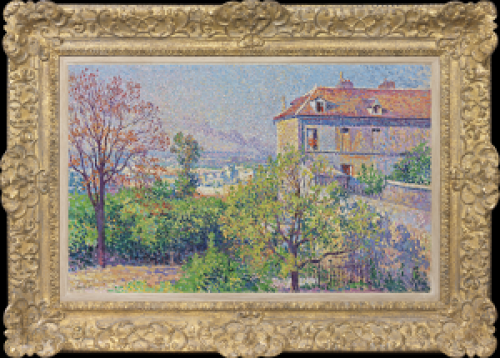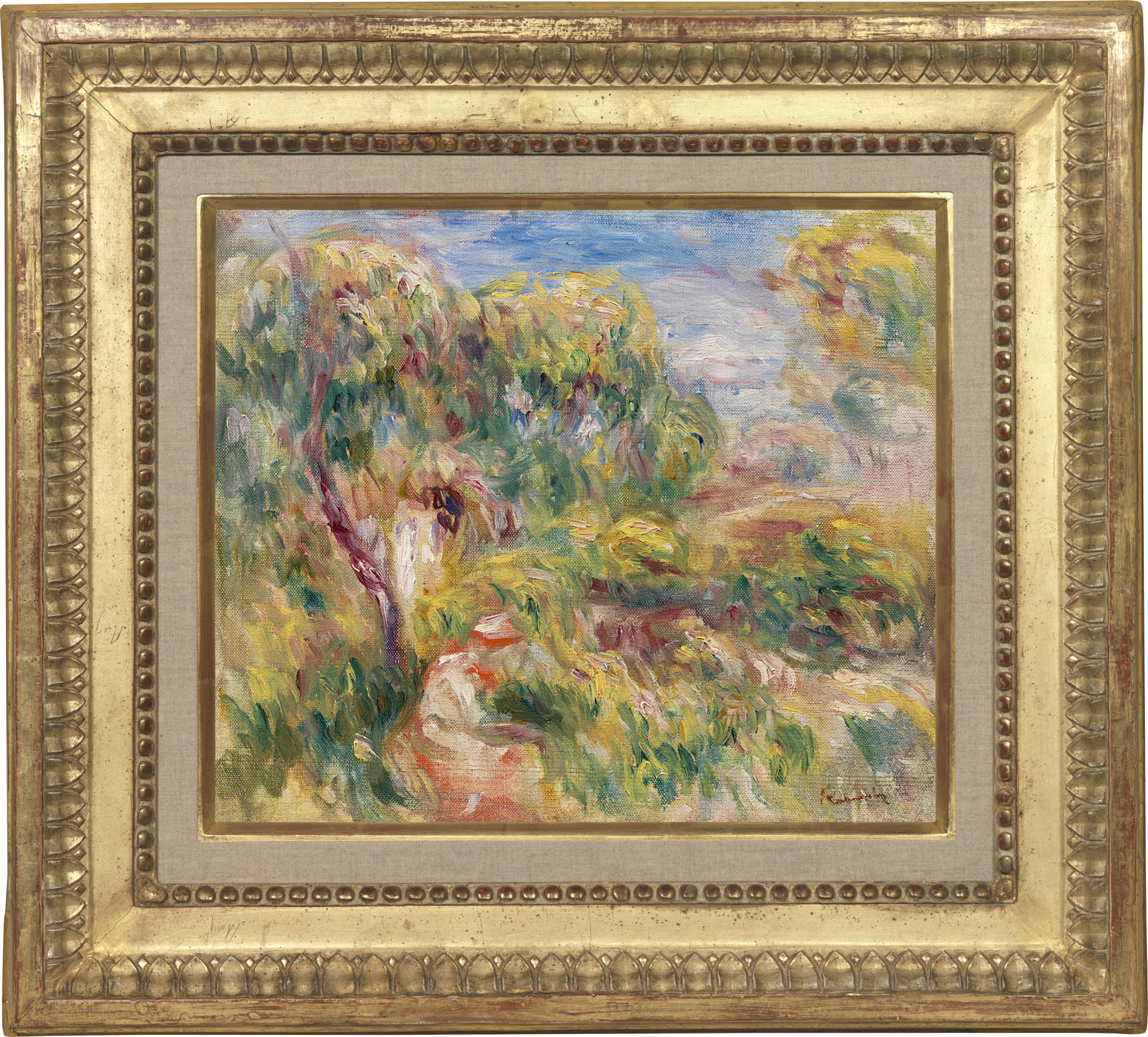PIERRE-AUGUSTE RENOIR
Limoges 1841 - 1919 Cagnes
Ref: CC 135
Esquisse de paysage, femme en rouge assise
Stamped with the signature lower right: Renoir
Oil on canvas: 11 7/8 x 13 7/8 in / 30.2 x 35.2 cm
Frame size: 19 x 21 in / 48.3 x 53.3 cm
Painted in 1916
Provenance:
Succession Pierre-Auguste Renoir, 1919-22;
his son Claude Renoir Snr (1901-1969), Paris, on deposit with Durand-Ruel, Paris, 17th April 1959[1]
Palais Galliera, Paris, 19th June 1963, lot 70
Private collection, Paris;
by descent circa 2023 in a private collection, Paris
Literature:
Marc Elder, L’Atelier de Renoir, vol. 2, Paris 1931, pl. 180, no.572
Albert André, Marc Elder and Messrs. Bernheim-Jeune, Renoir’s Atelier / L’Atelier de Renoir, rev. eds. Paris 1931 and San Francisco 1989, p.243, no.572, pl. 180
Guy-Patrice Dauberville and Michel Dauberville, Renoir: Catalogue raisonné des tableaux, pastels, dessins et aquarelles, vol. V, 1911-1919, Paris 2014, p.143, no.3860, illus.
To be included in the forthcoming digital catalogue raisonné of the work of Pierre-Auguste Renoir being prepared by the Wildenstein Plattner Institute from the François Daulte, Durand-Ruel, Venturi, Vollard and Wildenstein archives, ref. no.24.02.28 /21515
In 1907 Renoir purchased the small estate of Les Collettes near Cagnes, just west of Nice on the Côte d’Azur. Captivated by Provençal landscape and culture, he was determined to preserve the rural character of the property and left the original farm buildings untouched, building a new house on the estate into which he moved with his family in 1908. John House remarks that ‘Almost like Monet, who built his water garden as his ideal pictorial subject in his last years, Renoir would construct at Les Collettes a physical world which fulfilled his pictorial vision. But it was quite different in two crucial ways: Monet built his anew, to his own aesthetic specifications, while Renoir’s was old, preserved as an idealized vision of past society; and Monet’s was an elaborately cultivated garden, conceived as an object of solitary contemplation, whereas Renoir’s view of nature necessarily implied the human presence, which the olives and the old farm evoked so richly’[2].
Esquisse de paysage is among the most vibrant and instinctive of Renoir’s Provençal landscapes. He interweaves yellow and green, shot through with burgundy and lilac, to evoke the gnarled olive trees, sun-bleached grass and fragrant maquis of sage, thyme and cistus. A female figure, rapidly brushed in scarlet and white, sits in the foreground, daydreaming or reading, embraced by the exuberant natural world around her. Renoir rarely placed male figures in these pictures, except perhaps his own sons as children. Females preside over this fecund landscape, as did the females in Renoir’s own world: his calm, capable wife Aline, of Burgundian peasant stock, who ran the small estate with a firm but generous hand; the maids and farm workers.
The air of timeless contentment in this work wafts us back to the Arcadian world of Roman Provence and belies the fact that, in 1916 when it was made, France was at war and Renoir had lost his beloved Aline the year before. His son Jean, the future film director, had been wounded at the Front. Crippled by arthritis, Renoir painted with brushes strapped to his wrists, but there is no mistaking his deep optimism and the joy that flowed from him in the act of painting. Jean Renoir wrote of his father: ‘He was radiant, in the true sense of the word, by which I mean that we felt there were rays emanating from his brush, as it caressed the canvas’[3]. Only a painter, Jean later added, could ‘find the relationship between eternity and the instant, between the world and the soul’[4].
Note on the provenance
The paintings left in Renoir’s studio after his death in 1919 were divided between his three sons, Pierre, Jean and Claude (1901-1969). Esquisse de paysage, femme en rouge assise was inherited by Claude, who was a film and television director, and later in life a ceramicist.
PIERRE-AUGUSTE RENOIR
Limoges 1841 - 1919 Cagnes
Pierre-August Renoir, one of the best loved of the Impressionists, always painted the beauties of nature: harmonious landscapes, flowers, fruit, children and women. He began his career at the age of thirteen as a painter on porcelain in a factory in Paris. He soon gave this up in favour of painting fans and decorating blinds, which he did until 1862, when he had saved enough money to support his ambition to study art. He enrolled in classes at the Ecole des Beaux-Arts and in 1864 had his first painting accepted at the Paris Salon.
During this period Renoir also studied in the atelier of Charles Gleyre, where he became friends with Claude Monet, Alfred Sisley and Frédéric Bazille. In 1863 Manet’s Déjeuner sur l'Herbe caused uproar at the Salon des Refusés and made a deep impression on the group of young painters. They began to go on expeditions to the Forest of Fontainebleau to paint en plein air and started to develop a palette and style of painting that formed the foundation of Impressionism. In 1869 Renoir worked alongside Claude Monet at La Grenouillière on the Seine, producing what are considered to be the first landscapes painted in the Impressionist style.
Although Renoir continued to submit his works to the Salon throughout the early 1870s, he also continued to explore his new approach to light and colour and to forge strong links with other like-minded artists such as Camille Pissarro, Alfred Sisley and Edgar Degas. By 1874 the group was so disaffected by the constraints placed upon them by the Salon jury that they decided to mount their own exhibition which challenged the accepted tradition of official art exhibitions. In April 1874 the group held the first of the Impressionist exhibitions.
This group of artists exhibited eight times between 1874 and 1886 and Renoir participated on four occasions. In 1878 his painting Madame Charpentier and her children (Metropolitan Museum of Art, New York) was accepted at the Salon. The painting was critically well received and Renoir finally began to sell his paintings; for the first time he experienced a degree of financial security. As Renoir’s popularity grew he travelled more and gradually began to adopt a different approach to his art. The Impressionists were suffering from internal disputes which led Renoir to disassociate himself from them; consequently he did not take part in the eighth and final show in 1886.
Throughout the rest of his life Renoir’s work continued to develop. He visited the South of France, Italy and North Africa, where he painted dramatic, highly-coloured landscapes. He eventually married his companion Aline Charigot and as his family grew he experienced a new contentment. In 1907, suffering from ill health, he purchased a property in Cagnes-sur-Mer near Nice on the Côte d’Azur where he settled with his family and painted until his death in 1919.
[1] The painting was photographed at Durand-Ruel, Paris for Claude Renoir on 17th April 1959. Photo no.17017.
[2] London, Hayward Gallery/Paris, Grand Palais/Boston, Museum of Fine Arts, Renoir, 1985-6, pp.287-8.
[3] Renoir, my Father, 1958; English edn. New York 2001, p.421.
[4] Interview for a documentary made in 1967 by Jean Rivette; quoted in Jason Farago, ‘Dad left a big impression: the Renoir family inheritance’, New York Times, 30th May 2018.

